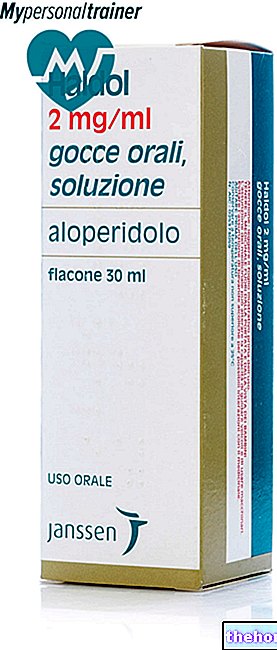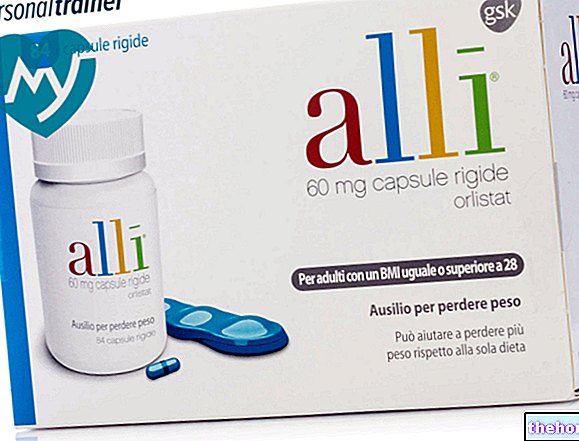Active ingredients: Dorzolamide
TRUSOPT 20 mg / ml eye drops, solution
Indications Why is Trusopt used? What is it for?
TRUSOPT contains dorzolamide which belongs to a group of medicines called "carbonic anhydrase inhibitors."
This medicine is prescribed to lower elevated intra-ocular pressure and to treat glaucoma. This medicine can be used alone or as a combination therapy with other medicines that lower intra-ocular pressure (called beta-blockers).
Contraindications When Trusopt should not be used
Do not use TRUSOPT:
- if you are allergic to dorzolamide hydrochloride or any of the other ingredients of this medicine.
- if you have severe kidney impairment or kidney problems, or a previous history of kidney stones.
Precautions for use What you need to know before taking Trusopt
Talk to your doctor or pharmacist before using TRUSOPT.
Tell your doctor or pharmacist about any medical problems you currently have or have had in the past, including eye problems and eye surgery, and any allergies to other medicines.
If you develop eye irritation or any other new eye problems, such as red eye or swollen eyelid, contact your doctor immediately.
If you suspect that TRUSOPT is the cause of an allergic reaction (eg, rash, severe skin reaction or itching), stop using this medicine and contact your doctor immediately.
Use in Children
TRUSOPT has been studied in infants and children under 6 years of age who have increased pressure in the eye (s) or who have been diagnosed with glaucoma. For more information, contact your doctor.
Use in the elderly
In clinical trials with TRUSOPT, the effects of this medicine observed in elderly and younger patients were similar.
Use in patients with hepatic impairment
Tell your doctor about any liver problems you currently have or have had in the past.
Interactions Which drugs or foods may change the effect of Trusopt
Tell your doctor or pharmacist if you are taking, have recently used or might use any other medicines (including eye drops). This is especially important if you are taking another carbonic anhydrase inhibitor such as acetazolamide or a sulfonamide.
Warnings It is important to know that:
Pregnancy and breastfeeding
Ask your doctor or pharmacist for advice before taking any medicine.
Use in pregnancy
This medicine should not be used in pregnancy. Tell your doctor if you are pregnant or planning to become pregnant.
Use in lactation
If treatment with this medicine is required, breastfeeding is not recommended. Tell your doctor if you are breastfeeding or planning to breastfeed.
Driving and using machines
Effects on the ability to drive or use machines have not been studied. There are side effects associated with the use of TRUSOPT, such as dizziness and blurred vision that may affect your ability to drive and use machines. You should avoid driving or using machines until you feel well or your vision is clear. not blurred.
TRUSOPT contains benzalkonium chloride
TRUSOPT contains the preservative benzalkonium chloride. This preservative can deposit in soft contact lenses and can alter the color of the lenses. If you wear contact lenses you should consult your doctor before using this medicine.
Dose, Method and Time of Administration How to use Trusopt: Posology
Always use this medicine exactly as your doctor has told you. If in doubt, consult your doctor or pharmacist. The appropriate dose and duration of treatment will be determined by the attending physician.
When this medicine is used alone, the recommended dose is one drop in the affected eye (s) in the morning, one in the afternoon and one in the evening.
If your doctor has recommended this medicine to be used together with beta-blocker eye drops to lower eye pressure, the recommended dose is one drop of TRUSOPT to be instilled in the affected eye (s). in the morning and one in the evening.
If TRUSOPT is used together with other eye drops, the drops should be instilled at least 10 minutes apart.
The tip of the dropper must not come into contact with the eye or surrounding areas. It can undergo bacterial contamination which can cause eye infections that can lead to serious eye damage, even loss of vision.
To avoid possible contamination, you should wash your hands before using this medicine and you should not rest the dropper tip on any surface. If you think the medicine may be contaminated or if you develop an eye infection , you should contact your doctor immediately before continuing to use the medicine.
Instructions for Use
- Before using the medicine for the first time, make sure that the safety strip located on the front of the bottle is intact. A gap between bottle and cap is normal for a bottle that has not yet been opened.
- Wash your hands first then tear off the safety strip to break the seal
- To open the bottle, unscrew the cap by turning it in the direction indicated by the arrows on the top of the cap. Do not pull the cap off directly from the bottle. Pulling off the cap directly will prevent the dropper from working properly.
- Tilt the head back and slightly pull the lower lid down to form a pocket between the lid and the eye.
- Invert the bottle and press lightly with your thumb or forefinger at the compressible area until a single drop has been introduced into the eye, as prescribed by your doctor. DO NOT CONTACT THE DROP TIP WITH THE EYE OR WITH THE EYELET.
- If the administration of the drops is difficult after opening the bottle for the first time, replace the cap on the bottle and tighten (not excessively) and then remove by turning the cap in the opposite direction to that indicated by the arrows on the top of the cap.
- Repeat steps 4 and 5 for the other eye if your doctor has prescribed treatment for both eyes.
- Screw the cap back tightly. The arrow on the left side of the cap must line up with the arrow on the left side of the bottle label to achieve a proper closure. Do not over tighten to avoid damaging the bottle and cap.
- The dropper is calibrated to deliver a single drop; DO NOT enlarge the hole in the dropper.
- Once the doses are exhausted, the bottle will still contain some remnants of the medicine. The bottle contains an excess of medicine to ensure that the full dose of the medicine prescribed by the doctor is available. Do not remove excess medicine from the bottle.
If you forget to use TRUSOPT
It is important that this medicine is given as prescribed by your doctor. If a dose is not instilled due to a forgotten dose, that dose should be taken as soon as possible. However, if the next dose is short of time, skip the missed dose and resume your usual dosing schedule. Do not take a double dose to make up for a forgotten dose.
If you stop taking TRUSOPT
If you want to stop the treatment, talk to your doctor first. If you have any further questions on the use of this medicine, ask your doctor or pharmacist.
Overdose What to do if you have taken too much Trusopt
If you put too many drops in your eye or if you ingest any contents of the container, contact your doctor immediately.
Side Effects What are the side effects of Trusopt
Like all medicines, this medicine can cause side effects, although not everybody gets them.
If you experience allergic reactions including hives, swelling of the face, lips, tongue, and / or throat which may cause difficulty in breathing or swallowing you should stop taking this medicine and contact your doctor immediately.
The following side effects have been reported with TRUSOPT in clinical trials or post-marketing:
Very common side effects: (affects more than 1 user in 10) Burning and stinging in the eyes.
Common side effects: (affects 1 to 10 users in 100) Disease of the cornea with eye pain and blurred vision (superficial punctate keratitis), discharge with itchy eyes (conjunctivitis), irritation / inflammation of the eyelid, blurred vision, headache , nausea, a bitter taste sensation, and fatigue.
Uncommon side effects: (affects 1 to 10 users in 1,000) Inflammation of the iris.
Rare side effects: (affects 1 to 10 users in 10,000) Tingling or numbness of the hands or feet, temporary myopia which may resolve upon discontinuation of treatment, fluid formation under the retina (detachment of the choroid after filter surgery), eye pain, eyelid crusting, ocular hypotension, corneal edema (with symptoms of visual disturbances), eye irritation including redness, kidney stones, dizziness, nosebleed, throat irritation, dry mouth, localized rash ( contact dermatitis), severe skin reactions, allergic-type reactions including skin rash, hives, itching, in rare cases possible swelling of the lips, eyes and mouth, shortness of breath, and more rarely wheezing.
Reporting of side effects
If you get any side effects, talk to your doctor or pharmacist. This includes any possible side effects not listed in this leaflet. You can also report side effects directly via the national reporting system at: www.agenziafarmaco.gov.it/it/responsabili. By reporting side effects you can help provide more information on the safety of this medicine.
Expiry and Retention
Keep this medicine out of the sight and reach of children.
Do not use this medicine after the six-number expiry date which is stated on the bottle and outer carton after EXP. The first two numbers indicate the month; the last four numbers indicate the year. The expiry date refers to the last day of that month.
Once opened, the TRUSOPT bottle must be used within the next 28 days.
This medicinal product does not require any special storage temperatures.
Keep the bottle in the outer carton to protect the medicine from light.
Do not throw any medicines via wastewater or household waste. Ask your pharmacist how to throw away medicines you no longer use. This will help protect the environment.
Other Information
What TRUSOPT contains
- The active ingredient is dorzolamide.
- Each ml contains 22.26 mg of dorzolamide hydrochloride equivalent to 20 mg of dorzolamide.
- The other ingredients are: hydroxyethylcellulose, mannitol, sodium citrate, sodium hydroxide and water for injections. Benzalkonium chloride is added as a preservative.
Description of what TRUSOPT looks like and contents of the pack
TRUSOPT is a clear, colorless or nearly colorless, slightly viscous solution. The Ocumeter Plus ophthalmic dispenser consists of a translucent high-density polyethylene container containing 5 ml of solution. Evidence of tampering is provided by a security strip located on the container label.
Packaging:
1 x 5.0ml (single bottle of 5ml)
3 x 5.0ml (three 5ml bottles)
6 x 5.0ml (six 5ml bottles)
Not all pack sizes may be marketed.
Source Package Leaflet: AIFA (Italian Medicines Agency). Content published in January 2016. The information present may not be up-to-date.
To have access to the most up-to-date version, it is advisable to access the AIFA (Italian Medicines Agency) website. Disclaimer and useful information.
01.0 NAME OF THE MEDICINAL PRODUCT
TRUSOPT 20 MG / ML EYE DROPS, SOLUTION
02.0 QUALITATIVE AND QUANTITATIVE COMPOSITION
Each ml contains 22.26 mg of dorzolamide hydrochloride equivalent to 20 mg of dorzolamide.
For the full list of excipients, see section 6.1.
03.0 PHARMACEUTICAL FORM
Eye drops, solution.
Clear, colorless to almost colorless, slightly viscous solution.
04.0 CLINICAL INFORMATION
04.1 Therapeutic indications
TRUSOPT is indicated:
• as a combination therapy with beta-blockers,
• as monotherapy in patients who do not respond to beta-blockers or in whom beta-blockers are contraindicated,
for the treatment of intra-ocular hypertension in patients with:
• ocular hypertension,
• open angle glaucoma,
• pseudoexfoliative glaucoma.
04.2 Posology and method of administration
Dosage
As monotherapy, the dosage is one drop of dorzolamide into the conjunctival sac of the affected eye (s), three times a day.
In combination with a beta-blocker for ophthalmic use, the dosage is one drop of dorzolamide in the conjunctival sac of the affected eye (s) twice daily.
When dorzolamide is used to replace another glaucoma ophthalmic drug, discontinue the first one after an appropriate daily dosage and start dorzolamide treatment the next day.
If more than one topical ophthalmic drug is used, these drugs should be administered at least ten minutes apart.
Inform the patient that they should wash their hands before use and avoid the tip of the dropper coming into contact with the eye or surrounding areas.
The patient should also be advised that ophthalmic solutions, if handled improperly, can be contaminated with common bacteria known to cause eye infections. The use of infected solutions can cause serious damage to the eye and consequent loss of vision.
Patients should be advised on the correct use of OCUMETER PLUS bottles.
Method of administration:
1. Before using the medicine for the first time, make sure that the safety strip located on the front of the bottle is intact. A gap between bottle and cap is normal for a bottle that has not yet been opened.
2. Wash your hands first then tear off the safety strip to break the seal.
3. To open the bottle, unscrew the cap by turning it in the direction indicated by the arrows on the top of the cap. Do not pull the cap off directly from the bottle.Pulling off the cap directly will prevent the dropper from working properly.
4. Tilt the head back and slightly pull the lower lid down to form a pocket between the lid and the eye.
5. Invert the bottle and press lightly with your thumb or forefinger at the compressible area until a single drop has been introduced into the eye, as prescribed by your doctor. DO NOT CONTACT THE DROP TIP WITH THE "EYE OR WITH THE EYEL.
6. If the administration of the drops is difficult after opening the bottle for the first time, replace the cap on the bottle and tighten (not excessively) and then remove by turning the cap in the opposite direction to that indicated by the arrows on the top of the cap. .
7. Repeat steps 4 and 5 for the other eye if your doctor has prescribed treatment for both eyes.
8. Screw the cap back on tightly. The arrow on the left side of the cap must line up with the arrow on the left side of the bottle label to achieve a proper closure. Do not over tighten to avoid damaging the bottle and cap.
9. The dropper is calibrated to deliver a single drop, so DO NOT enlarge the hole in the dropper.
10. Once the doses have been used up, the bottle will still contain residues of TRUSOPT. The bottle contains an excess of TRUSOPT to ensure that the full dose of TRUSOPT prescribed by the doctor is available. Do not remove excess medication from the bottle.
Pediatric population
In pediatric patients, limited clinical data are available with dorzolamide administration three times daily (for information on pediatric dosing see 5.1).
04.3 Contraindications
Hypersensitivity to the active substance or to any of the excipients listed in section 6.1.
Dorzolamide has not been studied in patients with severe renal impairment (clearance of creatinine hyperchloraemic acidosis. As dorzolamide and its metabolites are eliminated predominantly by the kidney, its use in such patients is contraindicated.
04.4 Special warnings and appropriate precautions for use
Dorzolamide has not been studied in patients with hepatic impairment; in such patients, therefore, the medicine should be used with caution.
Treatment of patients with acute angle-closure glaucoma requires therapeutic interventions in addition to hypotensive agents of ocular tone. Dorzolamide has not been studied in these patients.
Dorzolamide contains a sulfonamide group, which is also found in sulfonamides, and although it is applied topically, it is absorbed systemically. Consequently, the same types of adverse reactions attributable to sulfonamides may occur with topical use, including severe reactions such as Stevens-Johnson syndrome and toxic epidermal necrolysis. Discontinue use of this product if signs of severe reactions or hypersensitivity.
Oral carbonic anhydrase inhibitor therapy has been associated with urolithiasis as a result of acid-base disturbances, especially in patients with a previous history of kidney stones. Although no acid-base disturbances have been observed with dorzolamide, urolithiasis has rarely been reported. Because dorzolamide is a topical carbonic anhydrase inhibitor that is absorbed systemically, patients with a previous history of kidney stones may be at increased risk of urolithiasis while using dorzolamide.
If allergic reactions (eg, conjunctivitis and eyelid reactions) are observed, discontinuation of dorzolamide treatment should be considered.
There is a potential additive effect of dorzolamide on the known systemic effects of carbonic anhydrase inhibition in patients receiving an oral carbonic anhydrase inhibitor and dorzolamide. Concomitant administration of dorzolamide and carbonic anhydrase inhibitors is not recommended. orally.
Corneal edema and irreversible corneal decompensation have been reported during treatment with TRUSOPT in patients with pre-existing chronic corneal defects and / or a history of intraocular surgery. Topical dorzolamide should be used with caution in these patients.
Choroid detachment concomitant with ocular hypotonia has been reported after filtration procedures with administration of aqueous humor suppressant therapies.
TRUSOPT contains the preservative benzalkonium chloride, which can cause eye irritation. Remove contact lenses before instillation of the drug and wait at least 15 minutes before applying them again. Benzalkonium chloride alters the color of soft contact lenses.
Pediatric population
Dorzolamide has not been studied in patients less than 36 weeks gestational age and less than 1 week of age. Patients with significant immaturity of the renal tubules should only be treated with dorzolamide after careful consideration of the benefit-risk balance due to the possible risk of metabolic acidosis.
04.5 Interactions with other medicinal products and other forms of interaction
No specific drug interaction studies have been performed with dorzolamide.
In clinical studies, dorzolamide was used concomitantly with the following drugs, without showing negative interactions: timolol in ophthalmic solution, betaxolol in ophthalmic solution and drugs for systemic use, including ACE inhibitors, calcium channel blockers, diuretics, non-steroidal anti-inflammatory drugs , including aspirin, and hormones (e.g. estrogen, insulin, thyroxine).
The associations of dorzolamide with miotic drugs and with adrenergic agonists have not been adequately evaluated during the treatment of glaucoma.
04.6 Pregnancy and breastfeeding
Pregnancy
Dorzolamide should not be administered during pregnancy. No adequate clinical data on exposure to treatment during pregnancy are available. In rabbits, dorzolamide produced teratogenic effects at maternotoxic doses (see section 5.3).
Feeding time
It is unknown whether the drug is excreted in human milk in lactating rats. A decrease in offspring body weight has been observed in lactating rats. Lactation is not recommended if treatment with dorzolamide is required.
04.7 Effects on ability to drive and use machines
No studies on the ability to drive and use machines have been performed. Possible side effects, such as dizziness and visual disturbances, may interfere with the ability to drive and operate machinery.
04.8 Undesirable effects
TRUSOPT has been evaluated in more than 1,400 people in controlled and uncontrolled clinical trials. In long-term clinical studies involving 1,108 patients treated with TRUSOPT as monotherapy or as add-on therapy with an ophthalmic beta-blocker, the most frequent cause of discontinuation of TRUSOPT treatment (approximately 3%) was the occurrence of adverse reactions at the related to the drug, mainly conjunctivitis and eyelid reactions.
The following adverse reactions have been reported in both clinical trials and post-marketing experience:
[Very common: (≥1 / 10), Common: (≥1 / 100,
Nervous system disorders:
common: headache
Rare: dizziness, paraesthesia
Eye disorders:
Very common: burning and stinging pain
common: Superficial punctate keratitis, lacrimation, conjunctivitis, eyelid inflammation, eye itching, eyelid irritation, blurred vision
Uncommon: iridocyclitis
Rare: irritation including redness, pain, crusting of the eyelid, transient myopia (which resolved upon discontinuation of treatment), corneal edema, ocular hypotonia, choroid detachment after filter surgery
Respiratory, thoracic and mediastinal disorders:
Rare: epistaxis
Gastrointestinal disorders:
common: nausea, bitter taste sensation
Rare: throat irritation, dry mouth
Skin and subcutaneous tissue disorders:
Rare: contact dermatitis, Stevens-Johnson syndrome, toxic epidermal necrolysis
Renal and urinary disorders:
Rare: urolithiasis
General disorders and administration site conditions:
common: asthenia / fatigue
Rare: hypersensitivity: signs and symptoms of local reactions (eyelid reactions) and systemic allergic reactions, including angioedema, hives and itching, rash, shortness of breath, rarely bronchospasm
Diagnostic tests:
The use of dorzolamide has not been associated with electrolyte imbalances of clinical relevance.
Pediatric population
see section 5.1.
Reporting of suspected adverse reactions
Reporting of suspected adverse reactions occurring after authorization of the medicinal product is important as it allows continuous monitoring of the benefit / risk balance of the medicinal product. Healthcare professionals are asked to report any suspected adverse reactions via the national reporting system. "Street address: www.aifa.gov.it/responsabili.
04.9 Overdose
There is only limited information available regarding overdose in humans following accidental or intentional ingestion of dorzolamide hydrochloride.
Symptoms
The following has been reported with ingestion: somnolence; topical application: nausea, dizziness, headache, fatigue, abnormal dream activity and dysphagia.
Treatment
Treatment should be symptomatic and supportive. Electrolyte imbalance, acidosis and possible effects on the central nervous system may occur. Serum electrolyte values (particularly potassium) and blood pH levels should be monitored.
05.0 PHARMACOLOGICAL PROPERTIES
05.1 Pharmacodynamic properties
Pharmacotherapeutic group: Antiglaucoma and miotic preparations, Carbonic Anhydrase inhibitors, dorzolamide, ATC code: S-01-EC-03
Mechanism of action
Carbonic anhydrase (AC) is an enzyme found in many body tissues, including the eyes. In humans, carbonic anhydrase is present in several isoenzymes, the most active of which is carbonic anhydrase II (AC- II) found mainly in red blood cells but also in other tissues. The inhibition of carbonic anhydrase in the ciliary processes of the eye reduces the secretion of aqueous humor, resulting in a reduction in intra-ocular pressure (IOP).
TRUSOPT contains dorzolamide hydrochloride, a potent inhibitor of human carbonic anhydrase II. Following topical ocular administration, dorzolamide reduces elevated intraocular pressure, both in the presence and absence of glaucoma. Elevated intraocular pressure is a important risk factor in the pathogenesis of optic nerve damage and visual field loss.
Dorzolamide does not cause pupillary constriction and reduces intra-ocular pressure without causing undesirable effects such as night blindness and accommodation spasm. Dorzolamide has little or no effect on pulse rate or blood pressure.
Topical beta-blockers also lower IOP through the reduction of aqueous humor secretion, but act with a different mechanism of action. Studies have shown that when dorzolamide is administered in addition to a topical beta-blocker, a further reduction in IOP is observed; this finding agrees with the additive effects reported with beta-blockers and carbonic anhydrase inhibitors. for oral use.
Pharmacodynamic effects
Clinical Effects
Adult patients
In large-scale clinical trials of up to one year duration in patients with glaucoma or ocular hypertension, the efficacy of dorzolamide administered three times daily as monotherapy (IOP baseline> 23 mmHg) or administered twice daily has been demonstrated. day as add-on therapy to ophthalmic beta-blocker treatment (baseline IOP> 22 mmHg). The hypotensive effect of dorzolamide on IOP, either alone or in combination therapy, was observed throughout the day and was maintained during long-term therapy. The efficacy of long-term monotherapy was similar to that of betaxolol and slightly less than that of timolol. Given as add-on therapy to ophthalmic beta-blockers, dorzolamide showed an additional hypotensive effect on IOP, similar to that of 2% pilocarpine given four times a day.
Pediatric population
A 3-month double-blind, active-treatment controlled, multicenter study of 184 (122 for dorzolamide) pediatric patients aged 1 week to less than 6 years with glaucoma or elevated intraocular pressure (baseline IOP ≥22 mmHg) was performed. to evaluate the safety of TRUSOPT in topical tid (three times daily) administration. Approximately half of patients in both treatment groups were diagnosed with congenital glaucoma; other common etiologies were Sturge Weber syndrome, mesenchymal iridocorneal dysgenesis, aphakia. The distribution by age and treatment in the monotherapy phase was as follows:
In both age cohorts approximately 70 patients were treated for at least 61 days and approximately 50 patients were treated for 81-100 days of treatment.
If IOP was inadequately controlled on monotherapy with dorzolamide or timolol in gelling solution, a change to open-label therapy was made as follows: in 30 patients
Overall, the study revealed no additional safety concerns in pediatric patients: drug-related adverse effects were observed in approximately 26% (20% for dorzolamide monotherapy) of pediatric patients, the majority of which represented by non-serious local ocular effects such as burning and stinging, eye and injection pain. Corneal edema or clouding has been observed in a small percentage of patients,
The efficacy results in pediatric patients suggest that the decrease in mean IOP observed in the dorzolamide group was comparable to the decrease in mean IOP observed in the timolol group although a small numerical advantage was observed for the timolol group.
No long-term efficacy studies (> 12 weeks) are available.
05.2 Pharmacokinetic properties
Unlike carbonic anhydrase inhibitors for oral use, topical administration of dorzolamide hydrochloride allows a "direct action on the eye" with substantially lower doses and, therefore, with less systemic exposure to the active substance. In clinical studies, this resulted in a IOP reduction without acid-base or electrolyte imbalances characteristic of carbonic anhydrase inhibitors for oral use.
When applied topically, dorzolamide reaches the systemic circulation. To evaluate the potential for a systemic "inhibition of carbonic anhydrase after topical administration, the concentrations of active substance and its metabolite in erythrocytes (GR) and plasma, as well as the degree of inhibition of carbonic anhydrase in the erythrocytes: With chronic therapy, dorzolamide accumulates in erythrocytes due to selective binding to AC-II, while plasma concentrations of the free active substance remain extremely low. A single N-desethyl metabolite is formed from the active substance, which inhibits AC-II less potently than the active substance from which it derives but which also inhibits a less active isoenzyme (AC-I). The metabolite also accumulates in red blood cells where it binds primarily to AC-I. About 33% of dorzolamide is bound to plasma proteins. Dorzolamide is mainly excreted unchanged in the urine; the metabolite is also excreted in the urine. At the end of the treatment, dorzolamide is eliminated from the red blood cells according to a non-linear kinetics, which initially determines a rapid decline in the concentrations of the active substance, followed by a slower elimination phase with a half-life of the drug of about 4 months.
When dorzolamide was administered orally to simulate maximum systemic exposure following long-term topical ocular administration, steady state was achieved in 13 weeks. In the steady state, neither the active substance nor its metabolite were practically present in the plasma in free form; furthermore, the inhibition of AC at the erythrocyte level was lower than that considered necessary to observe a pharmacological effect on renal or respiratory function. Similar pharmacokinetic results were observed after chronic topical administration of dorzolamide.
However, in some elderly patients with renal impairment (clearance of estimated creatinine 30-60 mL / min), higher concentrations of the metabolite in erythrocytes were found, but this was not directly associated with significant differences in carbonic anhydrase inhibition or clinically significant systemic side effects.
05.3 Preclinical safety data
The main data from animal studies with orally administered dorzolamide hydrochloride have been related to the pharmacological effects of systemic inhibition of carbonic anhydrase. Some of these data were specific to the examined species and / or caused by metabolic acidosis.In rabbits treated with maternotoxic doses of dorzolamide associated with metabolic acidosis, malformations of the bodies of the vertebrae were observed.
In clinical studies, patients did not show signs of metabolic acidosis or changes in serum electrolytes, indicative of systemic inhibition of AC. Therefore, the effects seen in animal studies are not expected to be observed in patients treated with dorzolamide at the therapeutic dosage.
06.0 PHARMACEUTICAL INFORMATION
06.1 Excipients
Benzalkonium chloride
Hydroxyethylcellulose
Mannitol (E421)
Sodium citrate (E331)
Sodium hydroxide (E524) to adjust to taste the pH
Water for injections
06.2 Incompatibility
Not applicable.
06.3 Period of validity
2 years.
After first opening the container, TRUSOPT should be used no later than 28 days.
06.4 Special precautions for storage
Keep the bottle in the original carton to protect the medicine from light.
This medicinal product does not require any special storage temperatures.
06.5 Nature of the immediate packaging and contents of the package
The Ocumeter Plus ophthalmic dispenser consists of a translucent container in high density polyethylene with a sealed dropper, a compressible surface for dispensing drops and a cap consisting of two assembled parts. Upon first opening, the cap pierces the dropper dispenser sealed and, automatically, the two parts that compose it fit together, transforming it into a single element. The protective seal consists of a safety band on the bottle label.
The Ocumeter Plus ophthalmic dispenser contains 5 ml of solution.
TRUSOPT is available in the following pack sizes:
1 x 5ml (single bottle of 5ml)
3 x 5ml (three 5ml bottles)
6 x 5ml (six 5ml bottles)
Not all pack sizes may be marketed.
06.6 Instructions for use and handling
There are no special requirements.
07.0 MARKETING AUTHORIZATION HOLDER
Santen Italy S.r.l.
Via Roberto Lepetit
8/10 - 20124 Milan
08.0 MARKETING AUTHORIZATION NUMBER
AIC 031848017 "20 mg / ml eye drops, solution in OCUMETER PLUS container" 1 bottle of 5 ml
09.0 DATE OF FIRST AUTHORIZATION OR RENEWAL OF THE AUTHORIZATION
Date of first authorization: 27 September 1996
Date of most recent renewal: 11 November 2009
10.0 DATE OF REVISION OF THE TEXT
May 2015




























